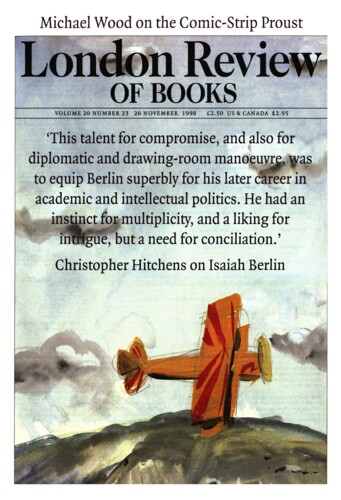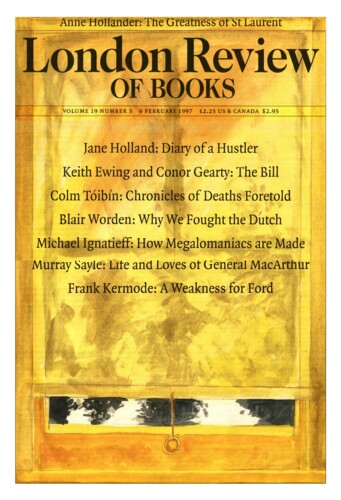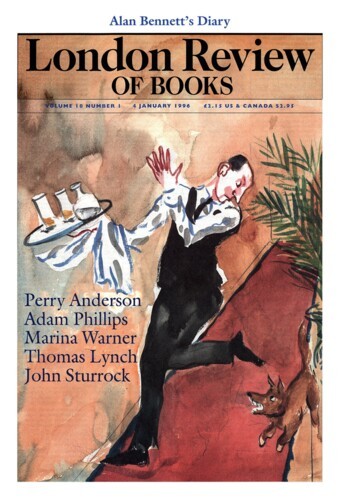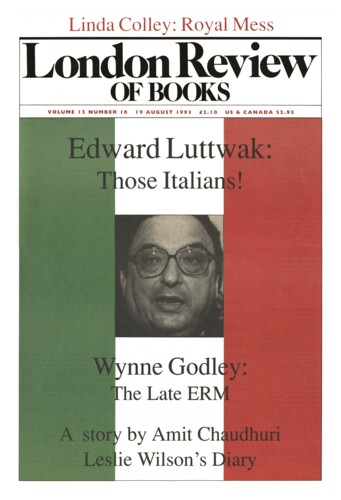Born in a Land where Yoghurt Rules the Roost: Sibelius
Paul Driver, 26 November 1998
Early in 1914 Jean Sibelius visited Berlin and went to hear Schoenberg’s Second String Quartet, in which an added soprano sings of ‘air from other planets’ as the music moves towards atonality. ‘It gave me a lot to think about,’ he wrote in the diary that he kept for much of the second half of his life and on which his biographer Erik Tawaststjerna relies heavily. A few days earlier, a Schoenberg song had made a ‘deep impression’ on him and he had found the Op. 9 Chamber Symphony ‘a legitimate and valid way of looking at things … But it is certainly painful to listen to. A result achieved by excessive cerebration.’ This encounter with Schoenberg occurred just over halfway through Sibelius’s life and in the middle of the original five volume version of this biography.





